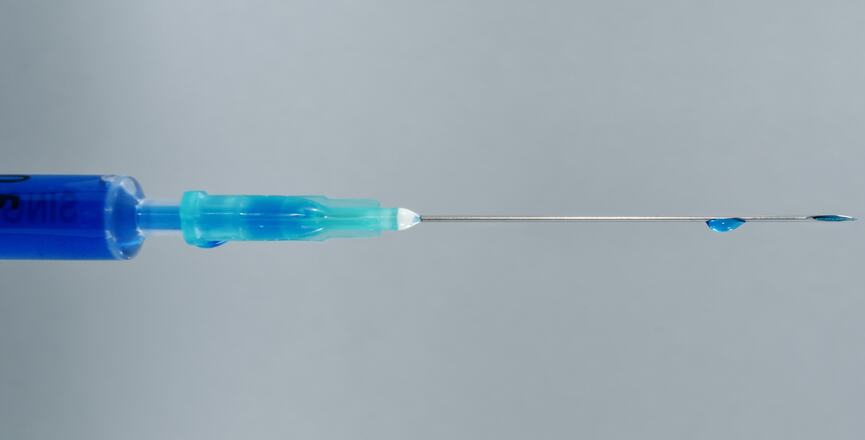Canadians with trypanophobia — a condition that refers to a fear of medical procedures involving injections — are among the vaccine-hesitant.
In this case, the hesitancy is due to extreme anxiety, rather than to a moral, ethical, religious or political stance against vaccines. These people are so frightened by the thought of voluntarily submitting to a needle that they can experience the symptoms of an anxiety attack.
Trypanophobia is not recognized in the compendium of medical diseases and conditions published by Health Canada. Nor is it included in the World Health Organization’s (WHO) International Classification of Diseases. It is, however, covered as a “specific phobia,” according to the Diagnostic and Statistical Manual, 5th Edition (DSM-5) of the American Psychiatric Association, a guidebook for mental health professionals.
Whether it is officially recognized or not, it is estimated that between 15 and 25 percent of the adult population suffers from a fear of needles. Trypanophobia is particularly common in younger adults and in babies and children.
People who fear needles are less likely to accept voluntary injections, inoculations and vaccines. These are the Canadians who appreciate so-called painless dentistry, which uses anaesthesia and sedation rather than injections of numbing agents and pain blocks.
Some trypanophobes have been able to overcome their anxiety in order to receive a COVID-19 vaccine. Each person manages differently, but somehow, many with trypanophobia do overcome their fears. The challenge is that for Canadians who receive a two-shot vaccine, the process has to be repeated.
We already incorporate annual vaccines into personal health regimes in Canada. The adult population and children over six months are encouraged to receive an annual influenza vaccine. The flu and pneumonia are among the top 10 causes of death in Canada. The annual flu shot works to keep this number in check — and yet, those with trypanophobia may be among those who avoid their annual shot.
Now, there is increasing discussion about the need for an annual booster shot for COVID-19, in addition to the annual flu shot. What does this mean for those with trypanophobia — and the rest of Canadians?
Seasonal flu management
With the start of the COVID-19 pandemic in March 2020, the annual flu season came to a virtual halt. Public health measures that encouraged hand-washing and mask-wearing were very effective at halting the spread of seasonal influenza. The number of cases plummeted.
Still, in the autumn of 2021, as in years past, a new flu shot will become available.
The annual influenza vaccine is developed and monitored by five WHO collaborating centers for reference and research on influenza. They are located in the United States, the United Kingdom, Australia, Japan and China.
Because the flu is seasonal, the dispersion of the centres around the globe allows countries to learn from others that have already experienced their influenza season, and to provide new research for countries for the following year. In effect, the collaborating centres work on an endless cycle of flu review, development, distribution and further review, beginning the cycle again. Some years, the resulting vaccines are more successful than others, but even in notably poor years, vaccines offer at least 50 percent more protection.
In Canada, any adult over the age of 18 can contribute to seasonal flu research by answering a very brief weekly questionnaire sent via email. It only takes about 15 seconds to complete and answers are anonymous. FluWatchers are Canadian volunteers who normally track the flu, but with the global pandemic, they’re also tracking COVID-19. There are three questions asked about fever, cough and COVID-19 vaccine status.
There are more and more reports that COVID-19 vaccines will not be a one-time event. With new variants developing rapidly, Canadians can expect that an annual booster for COVID-19 will become a routine part of preventive health care. In fact, Canada has already signed a pre-purchase agreement with Pfizer for boosters through 2024.
But will everyone want to add another poke to the equation? As with other elements of health care, vaccinations, even when free, come with the challenge of public acceptance.
Two-in-one vaccinations
Canada’s National Advisory Committee on Immunization (NACI) oversees publicly-funded vaccine programs at provincial and territorial levels. It acknowledges that many factors affect vaccine-uptake, including economics, ethics, equity, feasibility, and acceptability. NACI has pledged to “refin[e] methodological approaches to include these factors” in coming years.
As the distribution of COVID-19 vaccines has shown, vaccinating an entire country is not a simple matter.
With the lessons learned from COVID-19 vaccine distribution, and the encouragement of NACI to consider many non-medical factors in vaccination programs, the next few years should make it easier to vaccinate more Canadians, quicker and easier — for both seasonal influenza and COVID-19.
The good news is that laboratories around the world are working on the development of a combined seasonal flu and COVID-19 booster shot. Some are already undergoing clinical trials. Results should be available beginning in August.
This year, and for the foreseeable future, annual flu vaccines may be different. There may be a two-fer, providing immunity from both seasonal flu and COVID-19. Trypanophobes may breathe easier.
Evelyn H. Lazare is a retired health-care planner, strategist and executive. Currently living in Ottawa, she now devotes her writing primarily to novels.
Image credit: Bicanski/Pixnio.




